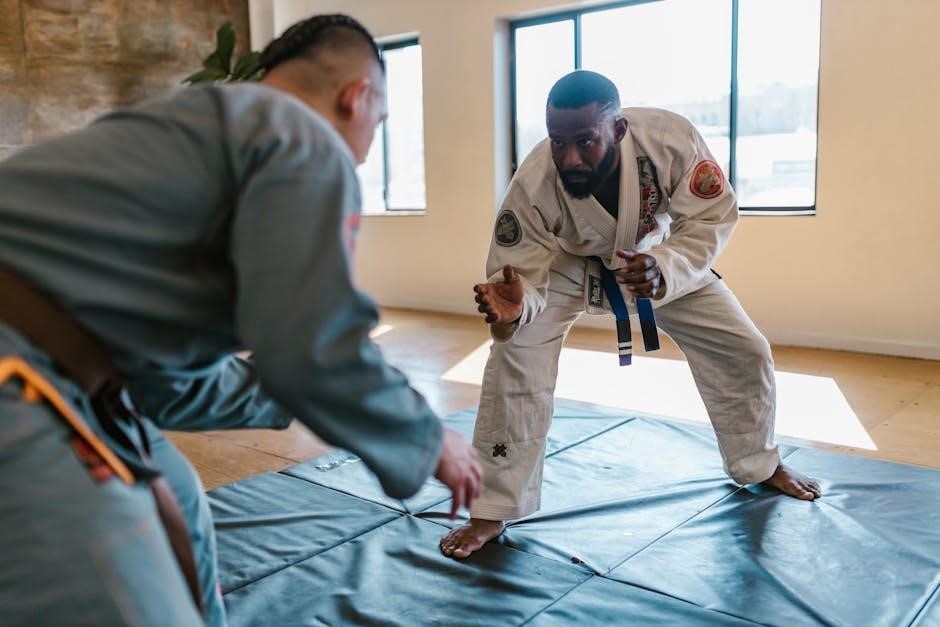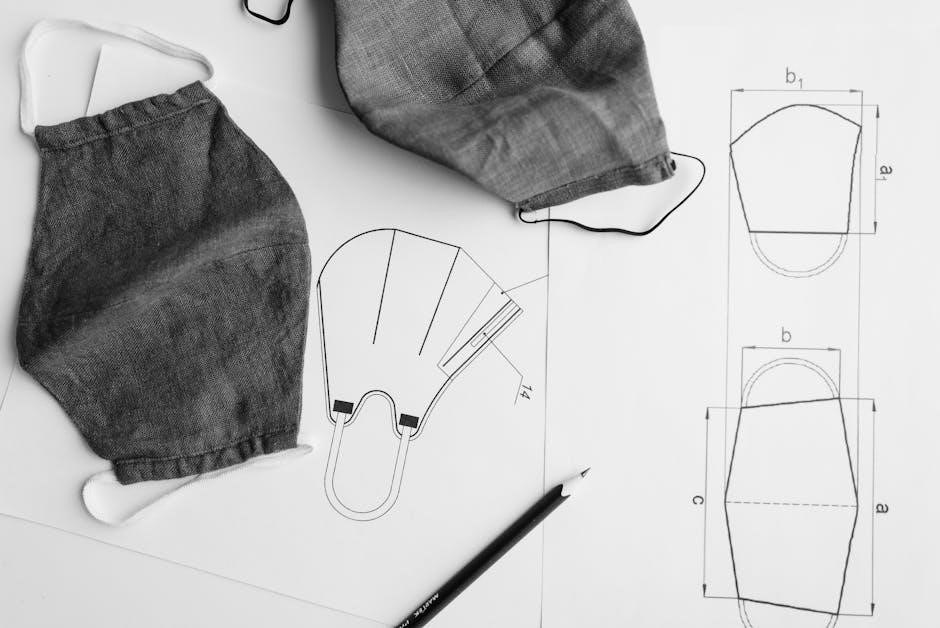Choosing the right Jiu Jitsu Gi size is crucial for optimal performance and comfort during training.
This guide details how height‚ weight‚ and body type affect your Gi fit.
It also covers brand-specific sizing to aid your choice.
1.1. Importance of Proper Fit in Jiu Jitsu
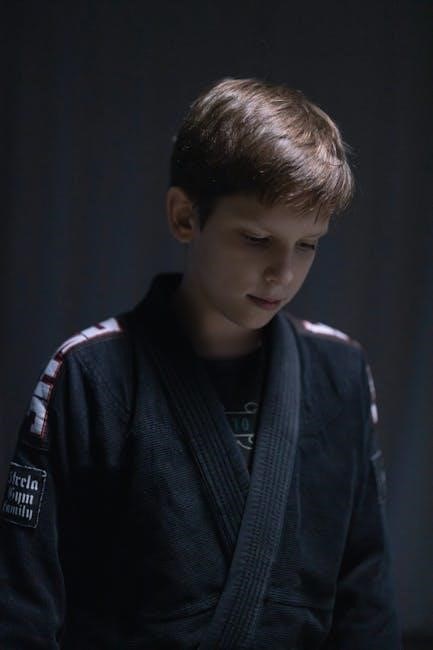
A proper-fitting Jiu Jitsu Gi is essential for both performance and comfort during training or competition.
A well-fitted Gi ensures unrestricted movement‚ reducing distractions and allowing focus on technique execution.
It also prevents excessive fabric that may cause discomfort or safety hazards during rolls or submissions.
Moreover‚ a Gi that fits correctly enhances durability‚ as it avoids unnecessary stress on seams and fabric.
Proper fit contributes to better hygiene and a professional appearance‚ making it a critical aspect of your training gear.
Choosing the right size ensures optimal comfort and performance‚ which are vital for successful Jiu Jitsu practice.
1.2. Overview of Jiu Jitsu Gi Sizing Systems
Jiu Jitsu Gi sizing systems vary‚ with the most common being the A0-A6 system for adults‚ indicating size based on height and weight.
Some brands offer women’s and kids’ sizes‚ tailored to different body types for better fit and comfort.
Unisex sizes (A0-A6) are standard‚ while women’s cuts are designed for a more fitted silhouette‚ and kids’ sizes accommodate growing bodies.
Each size chart typically includes measurements for jacket length‚ pant length‚ and weight ranges to guide selection.
Understanding these systems helps practitioners choose a Gi that meets their needs for training or competition.
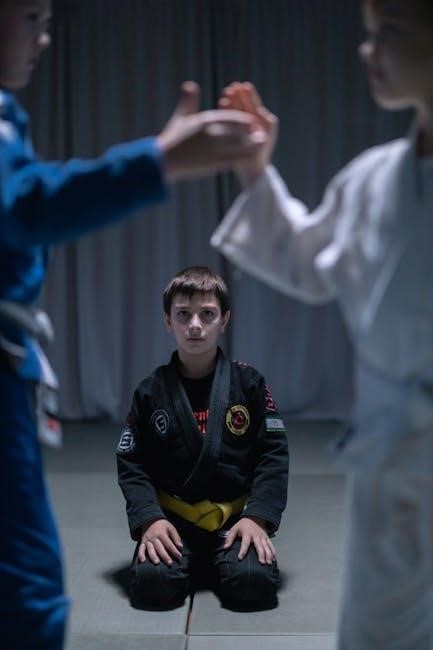
Understanding Jiu Jitsu Gi Sizing
Jiu Jitsu Gi sizing is based on height and weight‚ with sizes ranging from A0 to A6 for adults‚ and specialized cuts for women and kids.
- Understanding these measurements ensures a proper fit for optimal performance and comfort during training or competition.
- Check the brand’s sizing chart again to ensure accurate measurements.
- Consult with a tailor to adjust the fit without compromising the material’s integrity.
- Ensure proper washing and drying techniques to maintain the Gi’s shape and size.
2.1. The A0-A6 Sizing System Explained
The A0-A6 sizing system is the standard for Jiu Jitsu Gi uniforms‚ designed to fit adult practitioners based on height and weight. A0 is the smallest size‚ suitable for shorter and lighter individuals‚ while A6 is the largest‚ accommodating taller and heavier athletes. Each size increment corresponds to a specific height and weight range‚ ensuring a tailored fit. This system helps practitioners choose a Gi that meets their needs‚ balancing comfort and mobility. Proper sizing is essential for both training and competition‚ as a well-fitting Gi enhances performance and adherence to regulations.
2.2. Differences Between Unisex‚ Women’s‚ and Kids’ Sizes
Jiu Jitsu Gi sizes vary across unisex‚ women’s‚ and kids’ categories to cater to different body types and needs. Unisex sizes (A0-A6) are the most common‚ fitting a broad range of adult practitioners. Women’s sizes are tailored with a more fitted design‚ often featuring narrower shoulders and longer sleeves for better fit. Kids’ sizes are smaller and designed for growing bodies‚ typically labeled by age or youth-specific sizing (e.g.‚ K1-K4). While unisex Gis are standard‚ women’s and kids’ sizes prioritize comfort and mobility for their respective demographics‚ ensuring optimal performance during training and competition.
How to Choose the Right Gi Size
Selecting the right Gi size involves measuring height‚ weight‚ and body type‚ then consulting size charts. Personal preference for fit also plays a crucial role.
3.1. Measuring Your Height and Weight for Gi Size
Accurate height and weight measurements are essential for selecting the correct Gi size. Stand barefoot and straight to measure height. Weight should be taken without gear. Use these metrics to align with size charts‚ ensuring proper fit. Remember‚ Gi sizes correspond to these measurements to provide comfort and mobility during training. Always refer to the specific brand’s guidelines‚ as sizing can vary slightly. Precise measurements help avoid ill-fitting uniforms‚ ensuring optimal performance and compliance with regulations.
3.2. Considering Body Type and Fit Preferences
Body type significantly impacts Gi fit. Lean athletes may prefer slim cuts‚ while broader individuals might opt for looser fits. Consider muscle structure and torso length. Some prefer a snug fit for better mobility‚ others a relaxed feel. Personal preference plays a role in comfort during rolls. Ensure the Gi allows full range of motion without restricting movement. Proper fit enhances performance and reduces distractions. Always choose based on comfort and training needs. Remember‚ a well-fitting Gi boosts confidence and ensures effective training sessions.
3.3. How Personal Preference Affects Size Selection
Personal preference greatly influences Gi size choice. Some prefer a tighter fit for better grip control‚ while others opt for looser Gis for comfort. Training style also matters; competitors might choose tighter fits‚ while casual practitioners prefer relaxed Gis. Weight distribution and body proportions play a role‚ as does how the Gi feels during movement. Ultimately‚ the choice balances comfort‚ mobility‚ and performance. It’s essential to consider how the Gi fits during drills and rolls. Personal preference ensures the Gi aligns with individual needs‚ enhancing training experience and overall satisfaction.
Step-by-Step Guide to Measuring Yourself
Measure your height and weight accurately to determine your Gi size. Use a flexible tape measure for precise chest and waist measurements. Ensure accurate results for the best fit.
4.1. Measuring Your Height Accurately
To measure your height accurately‚ stand barefoot on a flat surface with your feet shoulder-width apart. Ensure your back is straight against a wall for precise measurement. Use a tape measure or ruler to record your height from the base of your heel to the top of your head. This ensures accurate size selection‚ as Gi sizing is often based on height and weight ratios. Proper alignment and posture are key to obtaining reliable results for the best fit.
4.2. Taking Your Weight Measurement
Accurately measuring your weight is essential for selecting the right Jiu Jitsu Gi size. Stand on a reliable scale barefoot and wearing minimal clothing to get an accurate reading; Ensure the scale is on a flat‚ even surface. Record your weight in kilograms or pounds‚ as Gi size charts often rely on weight combined with height for sizing. Consistency in measurement helps determine the best fit‚ ensuring comfort and mobility during training. Use this data alongside your height to find the optimal Gi size for your body type.
4.3. Determining Your Body Type for Gi Fit
Understanding your body type—ectomorph‚ mesomorph‚ or endomorph—helps in selecting the right Gi fit. Ectomorphs‚ with slimmer builds‚ may prefer a more tailored Gi‚ while endomorphs‚ broader and stockier‚ might opt for a looser fit. Mesomorphs‚ with athletic builds‚ often find a balanced fit suitable. Consider your body proportions‚ such as shoulder-to-waist ratio and limb length‚ to ensure the Gi jacket and pants fit comfortably. This assessment‚ combined with height and weight‚ guides you to the ideal Gi size for optimal performance and comfort during training sessions.
Jiu Jitsu Gi Size Chart
This section provides standard size charts for unisex‚ women’s‚ and kids’ Gis‚ ensuring accurate fit based on height and weight measurements.
5.1. Standard Unisex Gi Size Chart (A0-A6)
The standard unisex Gi size chart ranges from A0 to A6‚ with each size corresponding to specific height and weight measurements. A0 is the smallest size‚ suitable for shorter and lighter practitioners‚ while A6 is the largest‚ accommodating taller and heavier individuals. The chart ensures a balanced fit‚ considering both comfort and mobility. Proper sizing is essential to meet training and competition requirements‚ and this chart serves as a reliable guide for selecting the appropriate Gi size.
5.2. Women’s Gi Size Chart
The women’s Gi size chart is tailored to fit the female body‚ offering sizes designed for a more accurate and comfortable fit. Similar to the unisex chart‚ it ranges from A0 to A6 but is adjusted to accommodate differences in body structure. This chart ensures that women practitioners can find a Gi that provides both mobility and comfort‚ essential for effective training and competition. The sizes are determined based on height and weight‚ ensuring a precise fit suited to a woman’s frame.
5.3. Kids’ Gi Size Chart
The Kids’ Gi size chart is specifically designed for young practitioners‚ ensuring a comfortable and functional fit. Sizes are typically categorized by age and height ranges‚ accommodating growth and development. This chart helps parents choose the right size for their child‚ promoting proper movement and technique during training. Regular measurements are recommended to ensure the Gi remains suitable as the child grows‚ providing both comfort and performance.
Brand-Specific Sizing Variations
Brands often have unique sizing standards‚ so comparing charts is essential. Each brand tailors fits and materials differently‚ affecting size choices for optimal comfort and performance.
6.1. Popular Jiu Jitsu Gi Brands and Their Sizing
Popular brands like Fuji‚ Gameness‚ and Tatami offer unique sizing tailored to different body types. Fuji’s sizing tends to run slightly larger‚ catering to broader frames‚ while Gameness offers a more athletic fit. Tatami focuses on slim cuts‚ ideal for leaner athletes; Each brand’s size chart reflects these differences‚ ensuring a personalized fit. Understanding these variations helps in selecting the most comfortable and functional Gi for training and competition. Always refer to specific brand charts to make an informed decision.
6.2. How to Adjust for Different Brands
Adjusting for different brands requires checking each brand’s specific size chart‚ as sizing can vary significantly. Some brands offer a more relaxed fit‚ while others cater to athletic or slim builds. Consider your personal fit preference and compare measurements across brands. For example‚ if you prefer a looser fit‚ you might size up with one brand and stay true to size with another. Always review customer reviews or sizing feedback to gauge how a brand’s Gi fits. If uncertain‚ contact customer support for guidance to ensure the best fit for your training needs.
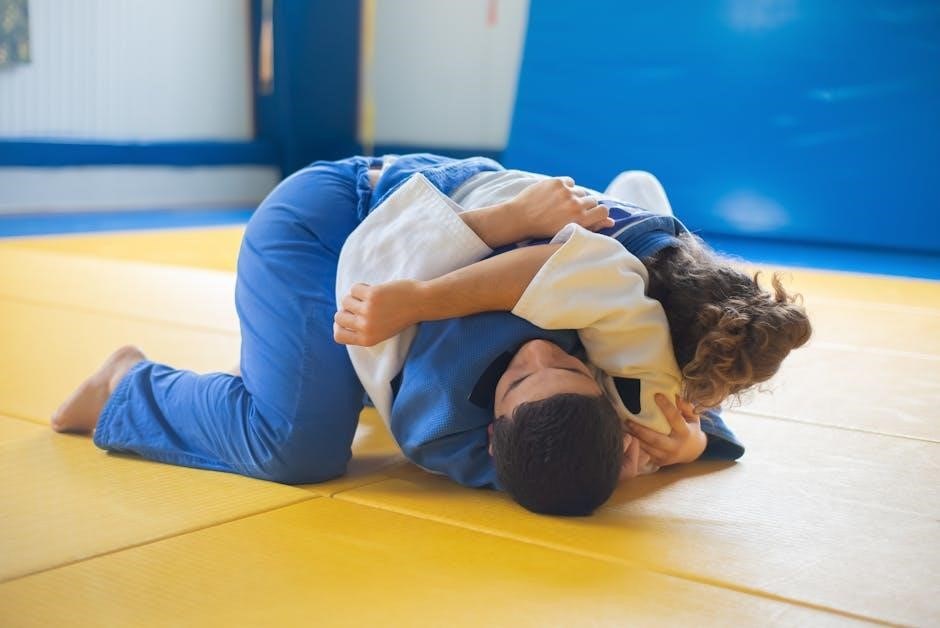
Factors Affecting Gi Fit
Fabric type‚ shrinkage‚ and cut significantly impact Gi fit. Thicker fabrics offer durability but may shrink more‚ while slim cuts provide a modern style.
7.1. Shrinkage and Fabric Type
Fabric type and shrinkage are key factors affecting Gi fit. Cotton Gis tend to shrink more than polyester or blended fabrics. Pre-shrinking during manufacture minimizes this impact.
Thicker fabrics‚ like gold weave cotton‚ are durable but may shrink significantly. Slimmer weaves‚ such as ripstop‚ resist shrinkage better but offer less durability.
Always wash your Gi in cold water and air dry to prevent excessive shrinkage. Fabric choice and care routines directly influence long-term fit and performance.
7.2. Cut and Style of the Gi
The cut and style of a Jiu Jitsu Gi significantly impact fit and performance. Slim-cut Gis offer a tighter‚ more athletic fit‚ reducing excess material for better mobility.
Standard cuts provide a balance between comfort and durability‚ while competition cuts are tailored to meet regulation requirements‚ emphasizing minimalism and lightweight design.
Some brands offer pre-shrunk Gis to ensure consistent sizing after washing. The choice of cut and style should align with your training preferences and body type for optimal comfort and functionality.
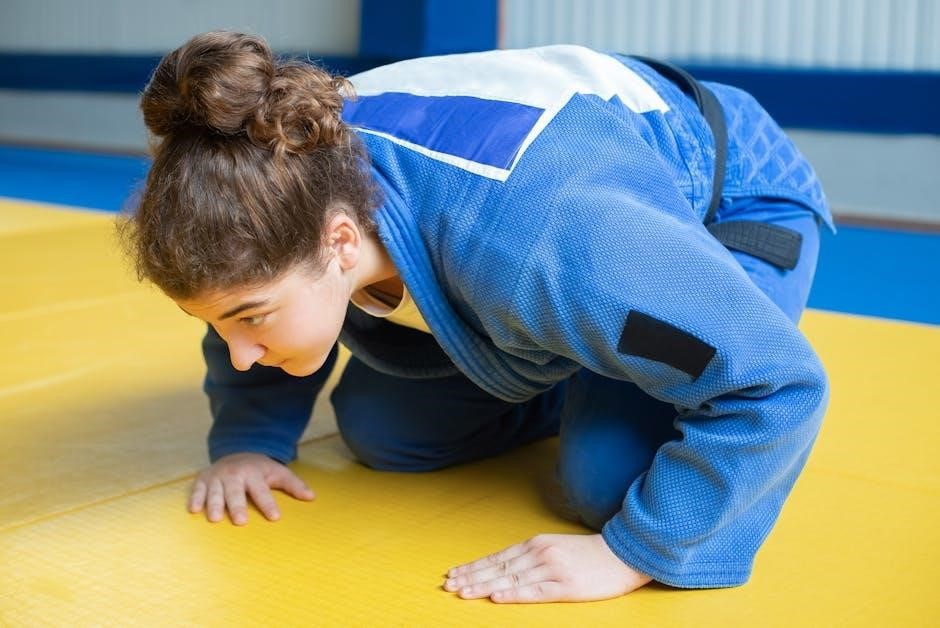
Tips for Choosing the Right Gi
Consider your training frequency and personal comfort preferences to make an informed decision.
Always refer to size charts and reviews for the best fit.
8.1. Considering Your Training Frequency
Your training frequency plays a significant role in choosing the right Gi.
If you train daily‚ opt for durable‚ heavy-duty fabrics.
Lighter weaves are ideal for occasional practice or competitions.
Regular washing and maintenance are crucial for longevity.
Heavier Gis offer more durability‚ while lighter ones enhance mobility.
Match your Gi choice to your training schedule and needs.
8.2. How Competition Regulations Impact Size Choice
Competition regulations heavily influence Jiu Jitsu Gi size selection.
Gis must meet specific size and fit requirements to be tournament-approved.
Sleeve and pant lengths are strictly measured to ensure fairness.
Weight classes also play a role‚ as Gis are sized to accommodate athletes within specific ranges.
Organizations like IBJJF enforce strict guidelines‚ so choosing the right size is essential for compliance.
Always check the regulations of the governing body before selecting your Gi.
This ensures you meet all standards and avoid disqualification.

Special Considerations
Special considerations include Gi sizing for women‚ kids‚ and unique body types.
These groups often require tailored fits for optimal comfort and performance.
9.1. Gi Size for Women: Key Differences
Women’s Jiu Jitsu Gi sizes are designed to accommodate a more tailored fit‚ addressing the unique needs of female athletes.
The cut and design differ from unisex Gis‚ offering a more ergonomic shape for comfort and mobility.
Height‚ weight‚ and body type are critical factors‚ but women’s Gis often feature narrower shoulders and a shorter jacket length.
Some brands also offer specific women’s sizing charts to ensure accuracy and comfort during training.
Additionally‚ shrinkage and fabric type should be considered to maintain the perfect fit over time.
Choosing the right size ensures optimal performance and compliance with competition regulations.
9.2. Gi Size for Kids: Growth and Fit
Choosing the right Gi size for children involves balancing fit and growth potential.
Kids’ Gis are designed to accommodate growing bodies‚ with sizes based on height and weight.
Proper fit ensures mobility and comfort during training‚ while avoiding excessive looseness.
Brands often offer youth-specific cuts with shorter sleeves and pants for a better fit.
Consider the child’s current size and expected growth to avoid frequent replacements.
Some brands provide adjustable features to extend the lifespan of the Gi.
Consulting a size chart and measuring accurately helps ensure the best fit for young practitioners.
Maintenance and Care of Your Gi
Regular washing and proper drying maintain your Gi’s quality and hygiene.
Cold water and air drying prevent shrinkage and extend lifespan.
10.1. Washing and Drying Your Gi
Proper washing and drying techniques are essential to maintain your Gi’s quality and longevity. Always wash your Gi in cold water using a mild detergent to preserve the fabric and prevent shrinkage. Avoid using bleach or harsh chemicals‚ as they can damage the material. After washing‚ gently reshape the Gi while it’s damp to maintain its fit. Air drying is highly recommended; hang it in a well-ventilated area away from direct sunlight to prevent fading and ensure even drying. Never dry your Gi in a dryer‚ as high heat can cause significant shrinkage and wear out the fabric faster. Regular maintenance will keep your Gi clean‚ comfortable‚ and in great condition for years of training.
10.2. How to Prevent Shrinkage
To prevent shrinkage‚ wash your Gi in cold water using a gentle cycle or hand wash it. Avoid hot water‚ as it can cause the fabric to shrink significantly. Never put your Gi in a dryer; instead‚ air dry it by laying it flat or hanging it in a shaded‚ well-ventilated area. Reshape the Gi while it’s still damp to maintain its original dimensions. Using fabric softeners or harsh detergents can also affect the material‚ so opt for mild‚ Gi-specific cleaners. By following these care tips‚ you can extend the life of your Gi and keep it fitting perfectly.
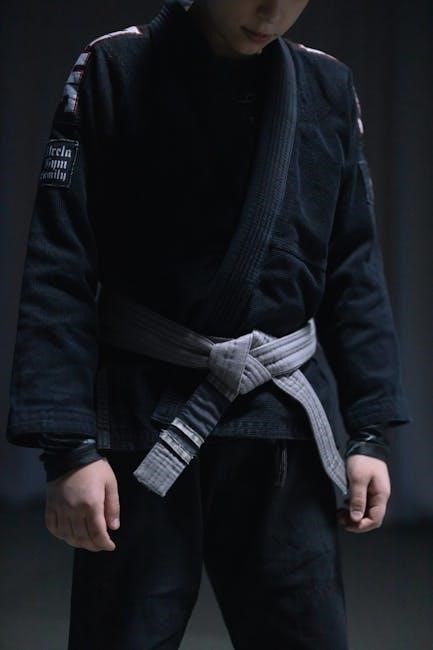
Troubleshooting Common Fit Issues
Identify if your Gi is too tight or loose and explore solutions like exchanging sizes or altering the garment for a better fit.
11.1. What to Do If Your Gi Is Too Tight
If your Gi feels too tight‚ it may restrict movement and comfort. Consider exchanging it for a larger size or checking if the fabric can stretch.
Washing and drying practices might also affect the fit; air-drying can prevent shrinkage. If the issue persists‚ consult the manufacturer or a tailor for adjustments.
11.2. What to Do If Your Gi Is Too Loose
If your Gi is too loose‚ it can affect performance and compliance with competition standards. Consider exchanging it for a smaller size or tailoring it for a better fit.
A well-fitted Gi is essential for both comfort and performance in Jiu Jitsu training.
Accurate measurements and understanding your body type are key to choosing the right Gi. Always consult size charts and prioritize comfort for optimal performance.
12.1. Summary of Key Points
A proper-fitting Jiu Jitsu Gi is essential for performance and comfort. Accurate measurements of height and weight are critical for selecting the right size. Understanding your body type and personal fit preferences ensures optimal comfort during training. Brand-specific sizing variations should be considered‚ as not all brands follow the same standards. Factors like shrinkage‚ fabric type‚ and cut style also impact the fit. Always refer to the size chart provided by the manufacturer and consider personal preferences for a loose or snug fit. By following these guidelines‚ you can make an informed decision and choose the best Gi for your needs.
12.2. Final Tips for Buying the Right Gi
When purchasing a Jiu Jitsu Gi‚ ensure to check the size chart specific to the brand. Consider the fabric type and weave for durability and comfort. Read reviews to understand how the Gi fits others with similar body types. If unsure‚ opt for a slightly larger size to allow for shrinkage. Prioritize your training needs‚ whether for competition or casual practice. Lastly‚ trust your comfort preferences—ultimately‚ the Gi should feel right for you during rolls and drills. These steps will help you make a confident and informed purchase.
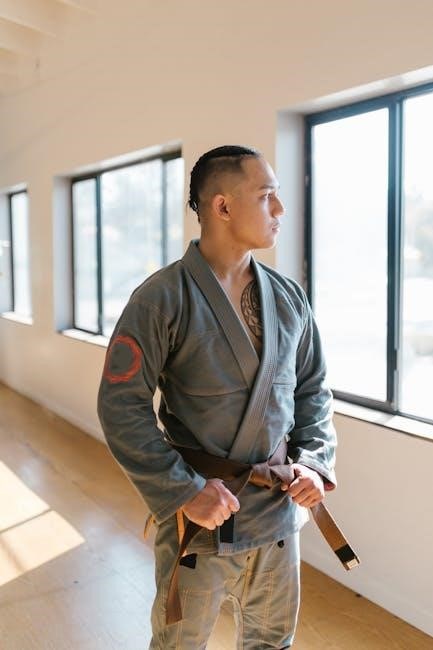
Additional Resources
Explore official manufacturer websites‚ forums‚ and instructional videos for more detailed guides and sizing charts to enhance your Gi selection process.
13.1. Where to Find More Sizing Information
For additional sizing details‚ visit official Jiu Jitsu Gi manufacturer websites‚ which often provide comprehensive size charts and measurement guides specific to their brands.
Online forums like Reddit or specialized BJJ communities offer firsthand experiences and advice from practitioners‚ helping you make informed decisions.
Instructional videos and blogs by martial arts experts also share tips on measuring and selecting the right Gi size for your needs.
Lastly‚ many brands offer searchable databases or size recommendation tools to help you find the perfect fit based on your height‚ weight‚ and preferences.
13.2. Recommended Tools for Measuring Yourself
To ensure accurate measurements‚ use a flexible measuring tape for chest‚ waist‚ and sleeve lengths.
A full-length mirror helps verify proper tape placement‚ especially for chest and shoulder measurements.
A digital scale provides precise weight readings‚ crucial for size selection.
Utilize a height measuring chart or wall-mounted ruler for accurate height recordings.
These tools‚ combined with a size chart‚ guarantee the best fit for your Jiu Jitsu Gi.
